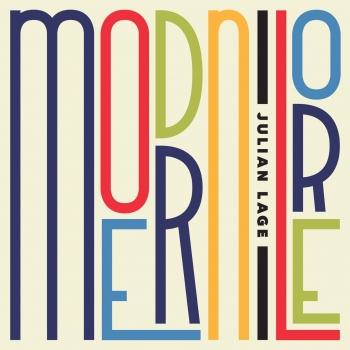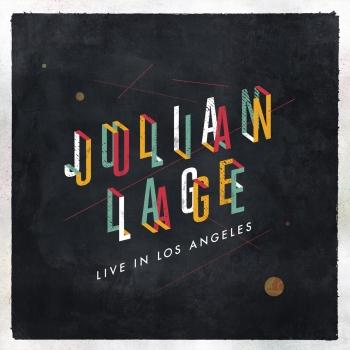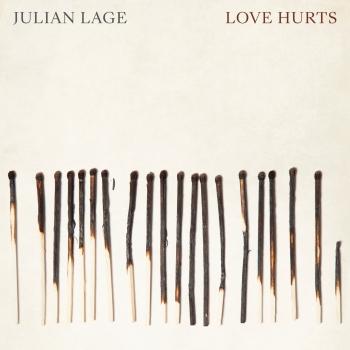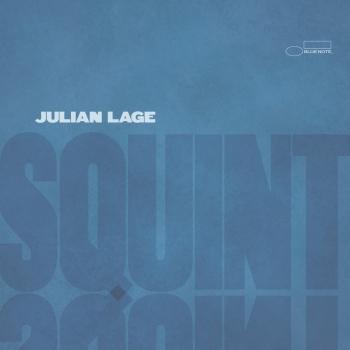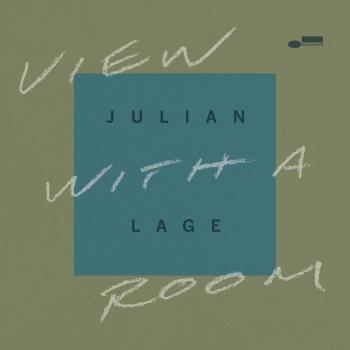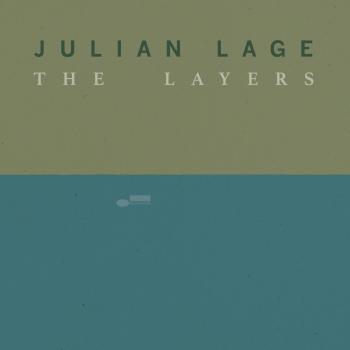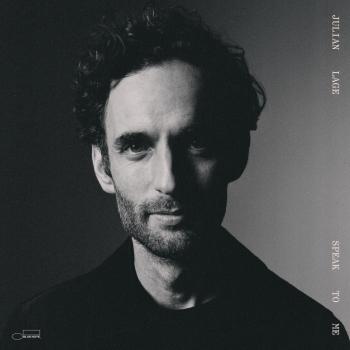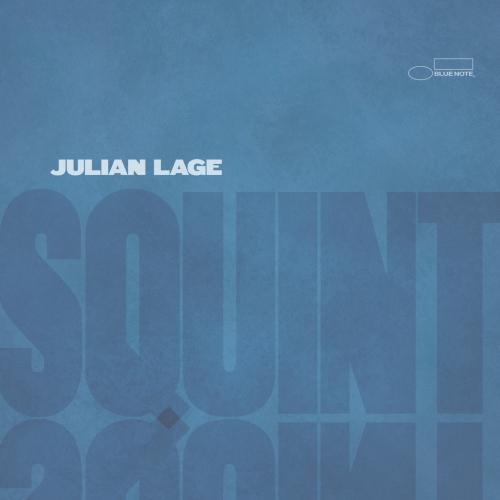
Squint Julian Lage
Album info
Album-Release:
2021
HRA-Release:
11.06.2021
Album including Album cover
I`m sorry!
Dear HIGHRESAUDIO Visitor,
due to territorial constraints and also different releases dates in each country you currently can`t purchase this album. We are updating our release dates twice a week. So, please feel free to check from time-to-time, if the album is available for your country.
We suggest, that you bookmark the album and use our Short List function.
Thank you for your understanding and patience.
Yours sincerely, HIGHRESAUDIO
- 1 Etude 02:27
- 2 Boo's Blues 03:25
- 3 Squint 04:29
- 4 Saint Rose 04:35
- 5 Emily 05:28
- 6 Familiar Flower 03:59
- 7 Day and Age 03:15
- 8 Quiet Like A Fuse 06:53
- 9 Short Form 03:31
- 10 Twilight Surfer 04:18
- 11 Call Of The Canyon 03:12
Info for Squint
As Julian Lage set out to record his leader debut for Blue Note Records, the virtuoso guitarist reflected on the label’s storied history and the way his own music connected with it. The result is “Squint”, a striking new album that weds incisive, expressive songwriting with the profound interplay Lage has honed over the past few years with his deft trio featuring bassist Jorge Roeder and drummer Dave King.
“I felt like this was an opportunity to present new music born out of the Blue Note tradition as I’ve interpreted it,” explains Lage, who previously recorded for the label with The Nels Cline 4’s “Currents, Constellations” and Charles Lloyd’s celebratory “8: Kindred Spirits”.
“I absolutely love improvised music, and I’ve always been fascinated by singer-songwriter music. For me, the jazz that came out of Blue Note always engaged both sides of that. It had incredible improvisational vocabularies and performances, but when I think of albums from Grant Green’s “Idle Moments” to Joe Henderson’s “Inner Urge” to McCoy Tyner’s “Time for Tyner” with Bobby Hutcherson – all these records that I love so much also have such great songs.”
When the trio took the stage of the Village Vanguard for a six-night residency in January 2020, those ideas seemed ripe enough to explore as they planned to head into the studio. When those plans were upended by the pandemic, Lage took the opportunity to retool his new songs in light of the summer’s lockdown and protests over social justice. By the time he, Roeder and King finally set foot in Nashville’s Sound Emporium in August, the tunes had taken on a deeper, darker air of mystery and searching.
“Going into this album,” Lage recalls, “my first tactic was just to make positive, beautiful music – a beam of light from three cats who love each other. After the recording didn’t happen, I started reflecting on the music’s intent. It was clearer than ever that art and music are platforms to influence and heal and facilitate conversations. It became really important to me to capture a certain sense of emotional complexity to the music, a little fuzziness. This record sits comfortably in the unknown.”
Finding comfort in that tenuous space was also aided by the presence in the studio of two of Lage’s closest compatriots, who served as co-producers: guitarist and longtime collaborator Armand Hirsch and singer-songwriter Margaret Glaspy, Lage’s partner in life as well as music. “On one level, the combination of Margaret and Armand is just abundant support,” Lage says. “But I also have such deep respect for what they both bring to the music. They helped make sure that the essential experience was always there, that Squint never became a pursuit to make a good jazz guitar record, but to create music with a clear spiritual pulse.”
That goal has also become more intuitive with the evolution of the trio with Roeder and King. The bassist has been a key member of Lage’s musical family throughout the guitarist’s career, beginning with his 2009 debut, “Sounding Point”. King, best known as drummer for the irreverent trio The Bad Plus, is a more recent hook-up. The group made its debut with 2019’s “Love Hurts”, a collection of mostly cover tunes spanning the members’ diverse interests, from Ornette Coleman and Keith Jarrett to Roy Orbison and Peter Ivers.
Crafted after two years of touring together, Squint reflects the trio’s loose but deeply attuned chemistry while tracing the threads of those wide-ranging influences into new original pieces. Lage’s lyrical writing reveals his love for early rock and blues as well as songbook standards and the bold, memorable compositions of his jazz idols. In addition to Glaspy’s keen-eared influence, he’s also sharpened his songcraft via the informal counseling of Jeff Tweedy. The Wilco frontman’s influence can be felt on vibrant, infectious songs like “Saint Rose,” an ode to Lage’s California hometown, recently beset by wildfires.
The intimate and meaningful connection between music and message was aided by Lage’s habit of composing by improvising along with speeches by leaders like James Baldwin and Nikki Giovanni. The cadence and clarity of their oratory guided his hands in unfamiliar ways, while the power of their words imbued a strong sense of conscience. “I found myself searching for the music that felt supportive in the presence of people that I really admire, who are teaching us,” he explains. “It was interesting how it ruled out a lot of musical mechanisms that I might habitually rely on. It taught me a lot about cadence and clarity and communication.”
Lage begins the album alone with the lovely, elegant “Etude,” a solo offering that feels both graceful and intimate. The band enters with the loping swing feel of “Boo’s Blues,” a piece that exemplifies Lage’s ability to write with his bandmates in mind while echoing his influences. “I like to imagine this music being played by the titans of bass and drums,” he says. “I’m imagining Billy Higgins, I’m imagining Art Taylor, I’m imagining Wilbur Ware, even though I’m writing explicitly for Dave and Jorge.”
The title track is another hybrid of influences, culled from the call and response of a Billy Higgins solo and the bounce of Lennie Tristano’s singular swing style. One of only two covers on the album, Johnny Mercer’s “Emily” is exquisitely rendered, luxuriating in its delicate melody. “Call of the Canyon,” made famous by “Singing Cowboy” Gene Autry, is its gorgeous companion piece, ending the album on a note of forlorn hope.
Beginning with a brooding pulse from King and Roeder, “Familiar Flower” is a dedication to the great Charles Lloyd, with whom Lage has had the opportunity to play in recent years. “Charles somehow writes and arranges his songs so that the second the beat starts, you know it’s his tune. His DNA is just embedded into the rhythm section. I still don’t know how he does it, but I tried to write that tune so that the tone is set before I even come in.”
The wistful “Day and Age” is reprised from Lage’s 2015 solo album “World’s Fair”, while the stealthy, implacable surge of “Quiet Like a Fuse” exemplifies the music at its most atmospheric and mysterious. Despite its tenderness, “Short Form” delves equally into the unknown, lacing the sweet melody with an underlying uneasiness. “Twilight Surfer” takes rockabilly twang into starker territory.
“We’ve inherited this art and all we can really do is present it with love and care and honesty,” he concludes. “Through that prism, unpredictable moments are joyous. Forget abiding by my vision. There’s a much bigger vision that we’re all taking part in and celebrating. That’s a beautiful thing.”
Julian Lage, guitar
Dave King, drums
Jorge Roeder, bass
Produced by Margaret Glaspy and Armand Hirsch
Julian Lage
The New York Times calls Julian “…one of jazz’s breezier virtuosos, possessed of an unflappable technical facility and a seemingly boundless curiosity.” At age 27, Julian Lage already boasts a resume that an artist twice his age would be proud to claim. A former child prodigy—he was the subject of the 1997 documentary Jules at Eight—the California- born, now New York–based guitarist has collaborated with such giants as Gary Burton, Jim Hall, David Grisman, Béla Fleck, and Charles Lloyd. He’s released three albums as a leader, most recently 2016’s trio outing Arclight featuring Scott Colley and Kenny Wollesen. UK’s Jazzwise describes Arclight as '... a bright light shone on very specific, finely wrought musical miniatures that unfold untold pleasures.'
Arclight, Julian Lage’s Mack Avenue debut, marks his first recorded outing on electric guitar and in a trio format, backed by double bassist Scott Colley and drummer Kenny Wollesen. Like that titular intense white light, Lage is a performer who burns brightly: The pace he sets is brisk, the mood often upbeat, the playing so quick-witted and offhandedly dazzling that one is compelled to immediately press “repeat,” especially when tracks like “Persian Rug” and “Activate” whiz by in under two and a half minutes. For a thoughtful artist like Lage, who will research and ruminate on a project long before he sets foot in a studio, this was a liberating experience, plugging in and playing with a kind of abandon. He was encouraged along the way by his producer and friend, the eclectic singer-songwriter Jesse Harris, who helped maintain an air of spontaneity and discovery throughout the trio’s three-day stint at Brooklyn Recording.
Lage has long been heralded for his virtuosic ability as an acoustic guitarist. In fact, he was well known in musician circles as a guitar prodigy, whose early genius was captured in a 1997 Oscar-nominated documentary short, Jules At 8. As an adult, he’s fulfilled the promise of his extraordinary youthful talent. The New Yorker’s Alec Wilkinson declared, “He is in the highest category of improvising musicians, those who can enact thoughts and impulses as they receive them.” Nate Chinen of the New York Times called Lage “one of jazz’s breezier virtuosos, possessed of an unflappable technical facility and a seemingly boundless curiosity.” After independently releasing a solo acoustic set of largely original material called World’s Fair in 2014, that curiosity prompted Lage to reconsider the electric guitar, specifically a Fender Telecaster – “the most refined embodiment of the modern guitar,” as he puts it.
“The Telecaster has been around for more than 60 years,” says Lage, “and it’s still so present. I took that as a parameter: Arclight focuses on my love of the electric guitar, specifically the Telecaster. And even more specifically, it’s centered on a jazz trio. It’s basically a realization of this recessive obsession I’ve had for a long time, but had never followed. I wanted to do songs that I feel maybe fell through the cracks for me when I was growing up, but now feel like a brand new kind of music.”
Though up to now Lage has largely recorded and performed original material, he wanted to explore his interpretive skills on Arclight, concentrating on music from the early to mid-20th century, “jazz before be-bop.” This was a period that had also inspired his composing for World’s Fair. As he did then, Lage consulted Brooklyn-based guitarist, banjo player and music scholar Matt Munestiri, who had already pored over the more obscure pages of the American Songbook. Explains Lage, “I had this conundrum. I was looking for minor songs and slightly more melancholy music from the twenties. Matt sent me about 20 songs that ranged from Willard Robison to Sidney Bechet to Jack Teagarden, Bix Biederbecke and Spike Hughes, a British band leader who had a recording of a song called ‘Nocturne’ that ended up on our record. He nailed this melancholy zone of jazz that I felt was kind of forgotten. It was really poignant, melodic music that had a quirk to it. I think of it as the pre-be-bop generation, when country music and jazz and swing were in this weird wild-west period. “
Along with ‘Nocturne,’ Lage tackled W.C. Handy’s “Harlem Blues,” a Gus Kahn-Neil Moret piano roll number called “Persian Rug,” and “I’ll Be Seeing You,” which starts off tenderly but gives way to a lively improvisational mid-section before finding its way back to the gentle, classic melody. The rest of the album consists of originals, which, notes Lage, “celebrate the other period I’m obsessed with, the Keth Jarrett American quartet period, an improvisational jazz era that had such a rich connection to songs and to folk music. This was the concept for the album.”
Playing a Telecaster is also an affectionate nod to Lage’s childhood: When he was four years old, his dad, a visual artist, had made him a plywood guitar, based on a Fender Esquire he’d traced from a Bruce Springsteen poster. Lage “played” that guitar until his dad bought him a real electric guitar a year later and they started practicing blues progressions and improvisation together. Similarly, Lage’s all-star rhythm section on Arclight recalls the sounds, the bands and the gigs that inspired him as a young musician. Lage remembers seeing Colley and Wollesen at famed Bay Area jazz club Yoshi’s, backing his hero, the late guitar icon Jim Hall, as well as his early mentor, Gary Burton: “I would go to these shows, sit up front, put my head on the stage and watch. They were the most formative jazz guitar experiences of my life. And they were with these guys. I didn’t specifically intend to reassemble that dream crew but then I thought I had a chance, why not call them? I love them, I know their sounds; they would get my vision. And that’s what tied everything together. This was not only a band where I could get to play all this stuff that I’ve come up with, this is band of people I love listening to. And that was so refreshing coming from the solo guitar thing, which was a very personal quest to build a solid individual foundation of music on the guitar. “
Jesse Harris became both observer and arbiter as the sessions unfolded, an invaluable role. While Lage would perceive a take as merely the first in a series, Harris, as Lage recounts, would say: “’That’s it! Do you hear the spirit, the narrative, the build? Do you see how you struggle there but nail it here? That’s the ebb and flow.’ I absolutely loved it. This was very different than the solo guitar record, where I felt as though only I knew when it was done. I was outnumbered on this one, and by all my favorite people and musicians. Arclight also has a spirit to it, this raucous energy, a thing that I felt was so strongly connected to this music and this band. There was a concept, a philosophy, a tonal palette, but that kind of energy, that almost dance-band vibe – Jesse could see it a mile away. It was so much fun to turn it up loud in the studio, and feel the music that way.”
Concludes Lage, “I feel like I’ve been on this very focused mission to make certain things a part of my musical life, and the electric guitar was one of the things that was missing. I’m very excited to share this. “
This album contains no booklet.










